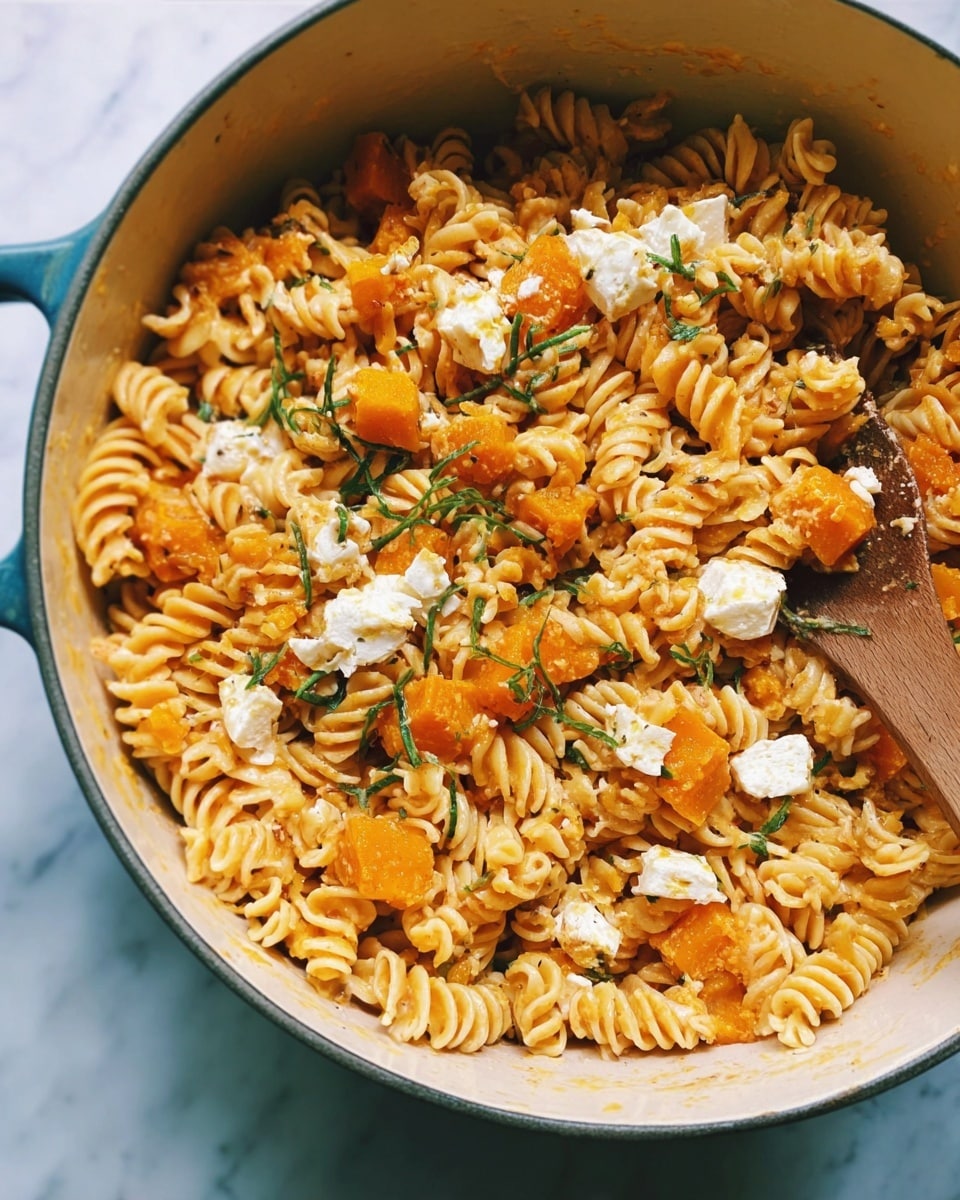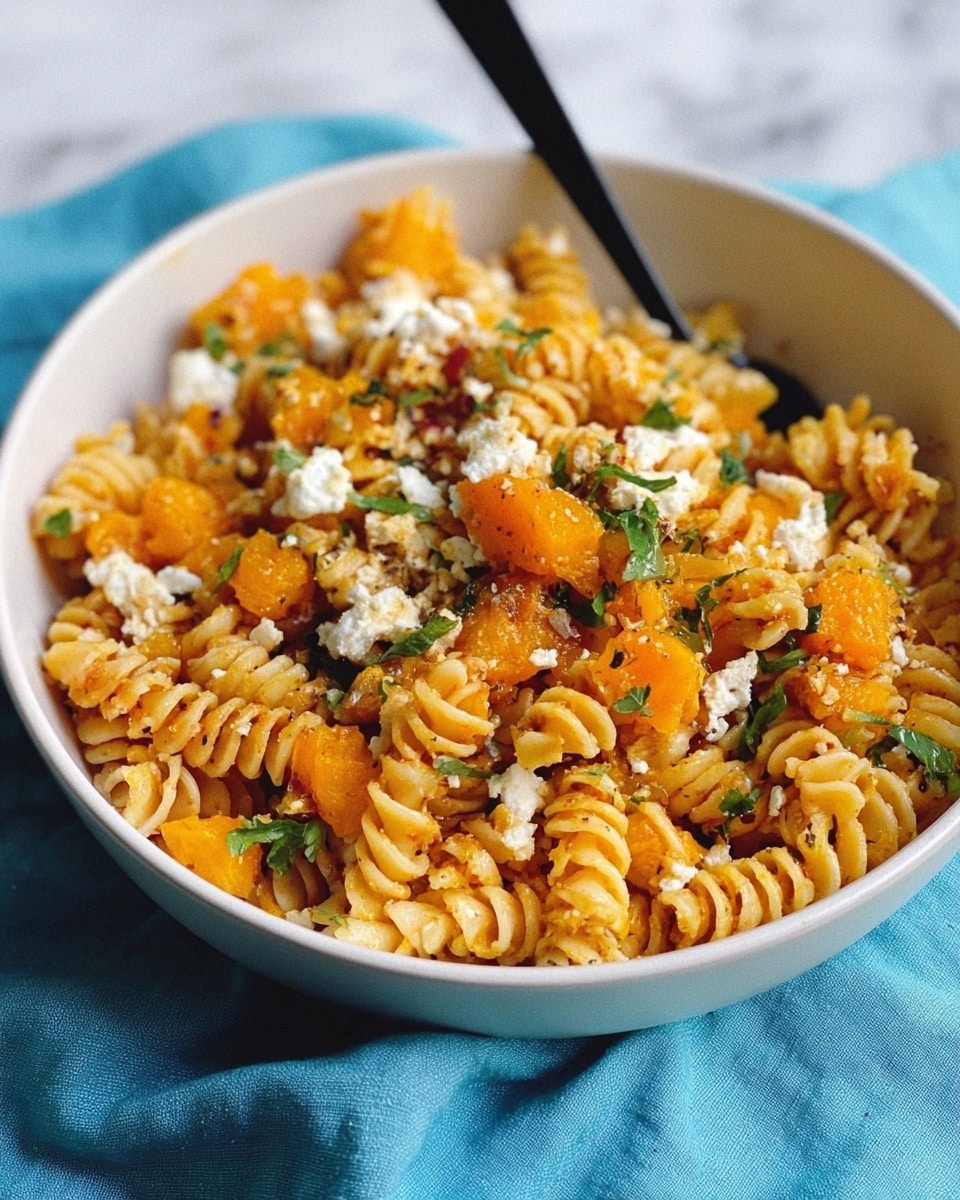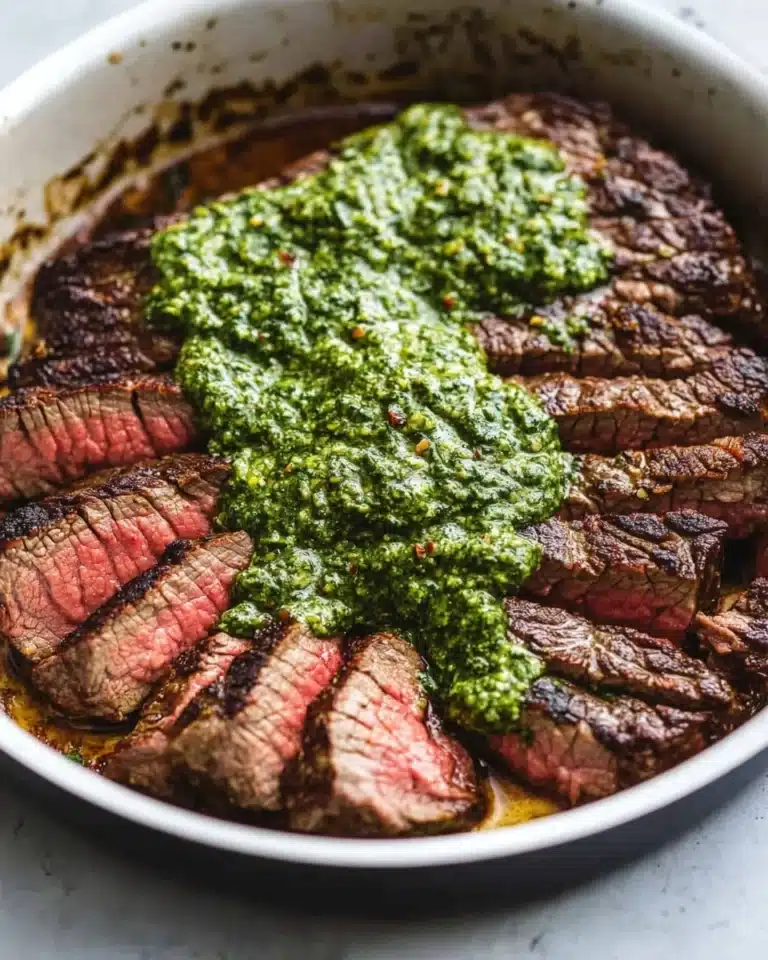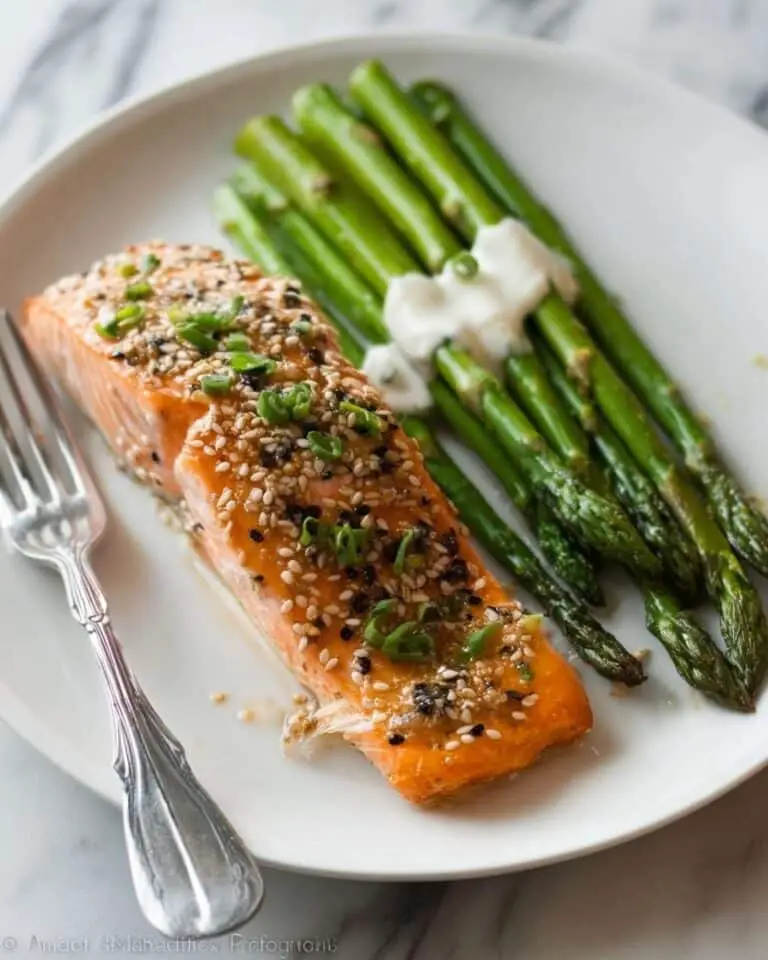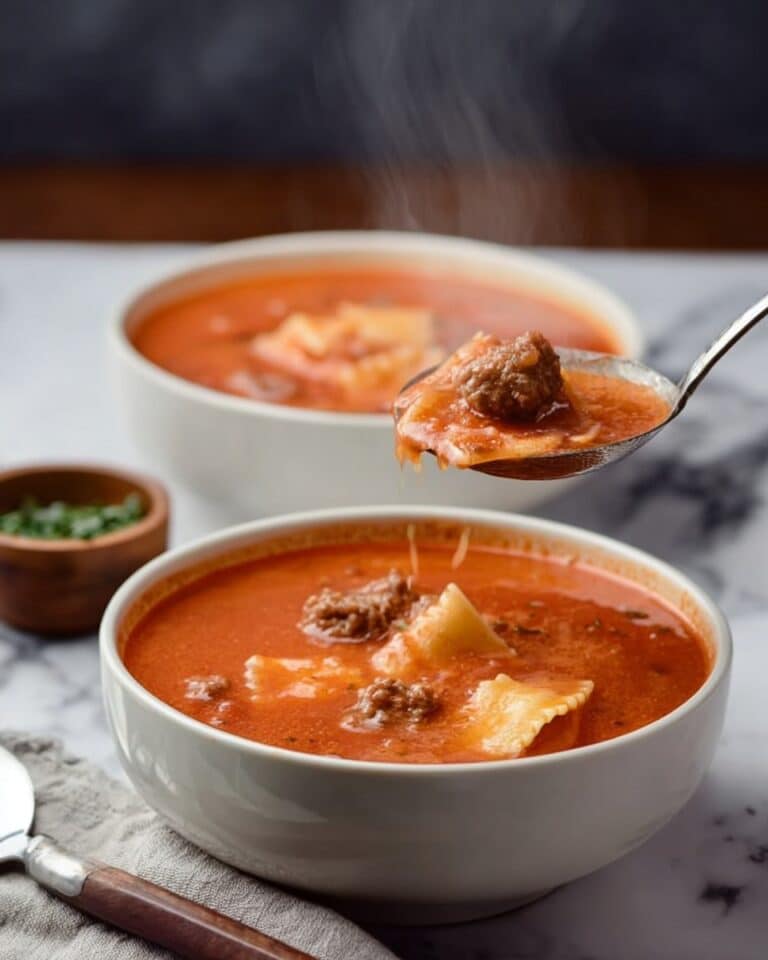I absolutely love how this Baked Feta and Butternut Squash Pasta with Sage and Garlic Recipe comes together — it feels like a cozy hug on a plate. The way the warm, roasted butternut squash melds with the creamy, slightly tangy baked feta is simply irresistible. This dish works wonders on chilly evenings when you want comfort food that’s easy to make but still feels a little fancy.
When I first tried this recipe, I was surprised by how the simple ingredients pack such a flavorful punch. You’ll find that the combination of sage and garlic adds an earthy, aromatic depth while the splash of honey balances the savory notes perfectly. It’s a recipe that’s worth trying when you want dinner that’s both delicious and a little different from the usual pasta routine.
Why You’ll Love This Recipe
- Effortless yet impressive: You roast the squash and feta together, which means minimal prep but maximum flavor impact.
- Perfect balance of flavors: Sweet squash, tangy feta, earthy sage, and a hint of honey create a flavor party in your mouth.
- Comfort food with a healthy twist: Loaded with veggies and wholesome ingredients, this pasta feels indulgent but is good for you.
- Versatile and adaptable: You can swap pasta shapes, add protein, or dial up the spice easily to suit your craving.
Ingredients You’ll Need
The ingredients in this Baked Feta and Butternut Squash Pasta with Sage and Garlic Recipe all come together beautifully, each playing a key role. When picking your butternut squash, look for a firm one with a deep orange color, which means it’s sweet and ripe.
- Butternut Squash: Fresh and firm for roasting, this adds natural sweetness and creaminess.
- Olive Oil: Use good quality extra virgin for the best flavor and drizzling over the feta.
- Kosher Salt: Great for seasoning and enhancing the natural flavors.
- Red Pepper Flakes (optional): Adds a gentle kick, but feel free to skip if you don’t like heat.
- Feta Cheese: A block works much better than crumbled — it bakes and softens beautifully.
- Pasta: Rotini, orzo, or ditalini are my go-to shapes because they catch the sauce well.
- Fresh Sage: Minced finely — it adds an earthy, herbal brightness that lifts the dish.
- Garlic: Use fresh and finely minced for a punch of savory warmth.
- Hot Honey (or regular honey): A drizzle adds balance and a touch of sweetness to tame the tangy feta.
- Fresh Cracked Black Pepper: Essential for seasoning just before serving.
Variations
One of my favorite things about this Baked Feta and Butternut Squash Pasta with Sage and Garlic Recipe is how easy it is to make your own. I often switch things up based on what’s in the kitchen or what mood I’m in—feel free to get creative!
- Adding protein: I’ve tossed in some cooked sausage or chickpeas for extra heartiness, and it works wonders.
- Use different herbs: Sometimes I swap sage for thyme or rosemary for a different herbal touch.
- Spice it up: A dash more red pepper flakes or a sprinkle of smoked paprika gives the dish a smoky edge I adore.
- Vegetarian or vegan: Swap feta for a vegan cheese alternative and use nutritional yeast for that cheesy flavor.
How to Make Baked Feta and Butternut Squash Pasta with Sage and Garlic Recipe
Step 1: Roast the Butternut Squash and Feta
Preheat your oven to 400°F. Toss peeled and cubed butternut squash with olive oil, generous pinches of kosher salt, and a few turns of fresh cracked pepper. Spread the squash out in a baking dish and nestle the block of feta right in the middle. Drizzle the feta with a bit more olive oil, sprinkle on red pepper flakes if you like heat, and add fresh cracked black pepper. This method means the feta melts tenderly while the squash caramelizes beautifully around it.
Step 2: Crisp Up the Feta for Extra Flavor
Bake the squash and feta for 30 minutes, then carefully shift the squash to make sure no pieces are burning on the bottom—be gentle so you don’t break the feta. Turn the oven up to 450°F and bake for another 5 to 10 minutes until the feta edges get a lovely golden brown crust. This step adds that irresistible texture contrast I love.
Step 3: Cook the Pasta and Combine Everything
While the feta and squash finish baking, boil your pasta in salted water until just al dente. Keep about two cups of pasta water before draining. Once the feta is beautifully browned, take the dish out of the oven and immediately mix in finely minced garlic, minced sage leaves, and a spoonful of hot honey. Toss in the drained pasta plus about one cup of the reserved pasta water, stirring to create a silky sauce. If the sauce looks dry, add more pasta water slowly until it’s nice and creamy. Taste and season with extra salt, pepper, or honey as you like—this flexibility is what makes it so reliable!
Pro Tips for Making Baked Feta and Butternut Squash Pasta with Sage and Garlic Recipe
- Choose your squash carefully: Smaller, denser butternut squash cubes roast more evenly and caramelize better.
- Don’t skip the honey: It tames the feta’s tang and ties together the sweetness of the squash with the savory notes.
- Reserve pasta water: Adding it slowly lets you control the sauce consistency perfectly so it’s creamy, not watery.
- Timing the garlic and sage: Adding them at the end keeps their flavor fresh and aromatic, but doesn’t burn them in the oven.
How to Serve Baked Feta and Butternut Squash Pasta with Sage and Garlic Recipe
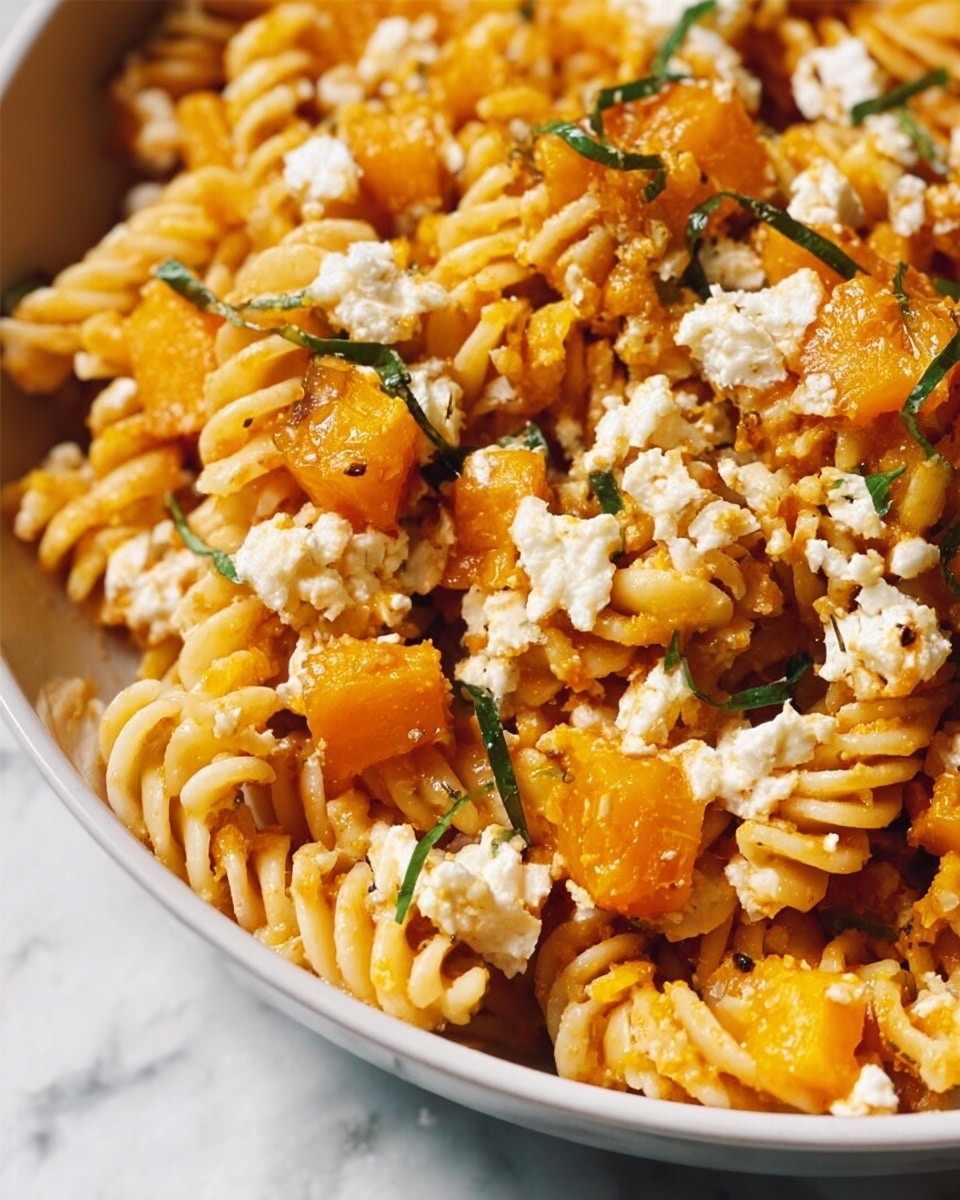
Garnishes
I love topping this pasta with a few fresh sage leaves fried lightly in olive oil for crispiness—they add a beautiful, crunchy texture contrast. A sprinkle of extra cracked black pepper and a drizzle of more hot honey on top send the flavors over the edge every time.
Side Dishes
This pasta pairs wonderfully with a simple green salad tossed with lemon vinaigrette or some roasted Brussels sprouts to echo those earthy flavors. Garlic bread is also a crowd-pleaser here if you want to keep things indulgent.
Creative Ways to Present
For special occasions, I like to serve this dish in individual shallow bowls, garnished with edible flowers or microgreens for a pop of color. Another fun twist is to turn it into a baked gratin by adding extra cheese and baking it a bit longer for a bubbly top.
Make Ahead and Storage
Storing Leftovers
I store leftovers in an airtight container in the fridge for up to three days. The sauce absorbs into the pasta, so I recommend adding a splash of water or olive oil when reheating to loosen it back up.
Freezing
Freezing this pasta is possible, but I find the texture of the squash changes a bit after thawing. If you want to freeze it, flash cool completely then portion out with some extra pasta water. Thaw overnight in the fridge before reheating gently.
Reheating
I usually reheat leftovers in a skillet over medium heat with a splash of olive oil or reserved pasta water. This method keeps the sauce creamy and the feta soft without drying out the squash or pasta.
FAQs
-
Can I use other types of squash for this recipe?
Absolutely! While butternut squash brings a lovely sweetness and creaminess, you can swap in other winter squashes like acorn or kabocha. Just adjust roasting time as they may cook faster or slower.
-
Is it okay to use crumbled feta instead of a block?
I recommend using a block of feta because it holds together better while baking, creating that melty, creamy center. Crumbled feta tends to dry out or burn during roasting.
-
What pasta shape works best for this dish?
Saucy pasta shapes that trap sauce and small bits work best, like rotini, orzo, or ditalini. Feel free to experiment but avoid very flat noodles as they don’t hold the roasted feta sauce as well.
-
Can I make this recipe vegan?
Yes! Use a plant-based feta alternative and perhaps add nutritional yeast to boost cheesiness. Keep the rest of the flavors the same for a delicious vegan version.
-
How spicy is this dish with red pepper flakes?
The red pepper flakes add a mild warmth that complements the creamy feta and sweet squash—it’s adjustable depending on your heat tolerance. You can always leave them out or add more for extra kick.
Final Thoughts
This Baked Feta and Butternut Squash Pasta with Sage and Garlic Recipe has become one of my go-to dinner ideas because it’s cozy, flavorful, and surprisingly simple to whip up. I love sharing it with friends and family because it feels like you put in a lot more effort than you actually did, and everyone always asks for seconds. I highly recommend giving this one a try—once you taste that sweet, creamy, and herbaceous combo, you’ll be hooked just like I was!
Print
Baked Feta and Butternut Squash Pasta with Sage and Garlic Recipe
- Prep Time: 10 minutes
- Cook Time: 40 minutes
- Total Time: 50 minutes
- Yield: 4 people
- Category: Main Course
- Method: Baking
- Cuisine: Mediterranean
- Diet: Vegetarian
Description
This Baked Feta and Butternut Squash Pasta with Sage and Garlic is a comforting, flavorful dish that combines sweet roasted butternut squash and creamy baked feta with aromatic sage and garlic, all tossed with pasta for a creamy, easy weeknight meal. The feta bakes alongside the squash, creating a luscious sauce that is enhanced with a touch of hot honey and fresh herbs.
Ingredients
Vegetables and Herbs
- 5 cups Butternut Squash (about 1 large butternut squash)
- 10 leaves Fresh Sage, minced
- 3 cloves Garlic, finely minced
Cheese
- 1 8 oz block Feta Cheese
Pantry Items
- 1/2 cup Olive Oil, plus more for drizzling
- 2 hefty pinches Kosher Salt (just shy of 1/2 tsp for squash, plus more for pasta and seasoning)
- 1 hefty pinch Red Pepper Flakes (optional)
- Fresh Cracked Black Pepper, to taste
- 1 tablespoon Hot Honey (regular honey can be used too)
- 1 lb Pasta (such as rotini, orzo, or ditalini)
Instructions
- Preheat Oven: Set your oven to 400°F to prepare it for roasting the butternut squash and feta.
- Toss and Arrange Squash and Feta: In a baking dish, toss the butternut squash with olive oil, 2 hefty pinches of kosher salt, and fresh cracked black pepper. Place the block of feta in the center of the dish, drizzle it with olive oil, sprinkle with red pepper flakes and additional black pepper. Arrange squash evenly around the feta.
- Bake at 400°F: Bake the dish for 30 minutes, allowing the squash to soften and the feta to begin melting.
- Increase Heat and Brown Feta: Carefully move the butternut squash a bit to prevent burning on the bottom without touching the feta. Increase oven temperature to 450°F and bake for an additional 5–10 minutes until the feta is slightly golden and browned on top.
- Cook Pasta: While the feta and squash bake, boil 1 lb of pasta in salted water until al dente. Drain the pasta but reserve 2 cups of pasta cooking water for the sauce.
- Combine Ingredients in Baking Dish: Remove the baking dish from the oven. Immediately add the minced garlic, minced sage leaves, and hot honey to the feta and squash mixture. Stir to combine.
- Toss Pasta with Sauce: Add the cooked pasta and 1 cup of the reserved pasta water to the baking dish. Stir thoroughly to coat the pasta with the creamy feta and squash sauce.
- Adjust Sauce Consistency and Season: If the pasta seems dry, gradually add more reserved pasta water until the sauce is smoothly creamy. Taste and adjust seasoning with additional salt, pepper, or hot honey as desired before serving.
Notes
- Use a sturdy baking dish to hold the squash and feta for even roasting.
- Red pepper flakes add a nice heat but can be omitted for a milder dish.
- Saving pasta water helps achieve the perfect sauce consistency by adding starch and moisture.
- Hot honey enhances the sweetness and adds a gentle spice balance to the savory feta and squash.
- Fresh sage adds a lovely herbal note; do not substitute with dried sage as the flavor will be less vibrant.
- This dish can be adapted with gluten-free pasta to make it gluten-free.
Nutrition
- Serving Size: 1 serving (about 1/4 of recipe)
- Calories: 550 kcal
- Sugar: 6 g
- Sodium: 700 mg
- Fat: 22 g
- Saturated Fat: 8 g
- Unsaturated Fat: 13 g
- Trans Fat: 0 g
- Carbohydrates: 65 g
- Fiber: 6 g
- Protein: 18 g
- Cholesterol: 25 mg

